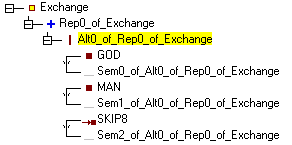
Cost-saving elasticity: Some applications may also take advantage of cloud elasticity-the ability to automatically spin-up and spin-down resources to precisely match demand.You also won’t have to overprovision hardware to account for peak traffic periods. Scalability on demand: Lift and shift can enable your organization to scale an application without purchasing and physically installing new computing capacity.Expanded capacity while consolidating on-premises: Add compute capacity, storage, and additional network bandwidth from the cloud on a pay-by-use basis while consolidating your on-premises data center infrastructure and costs at the same time.Potential for improved performance: Lift and shift offers the opportunity to run applications on updated, better-performing hardware, without having to purchase the hardware yourself.The on-premises application can remain in place during the migration so that there’s no interruption of service, and the application experience remains identical to users. A fast, cost-effective, minimally disruptive migration: Lift and shift lets you migrate quickly, without dedicating a large team to the task.

Lift and shift benefitsĬompared to continuing to run an application on-premises, lift and shift migration can offer several compelling benefits: Today, lift and shift is considered primarily as an option for migrating workloads that are cloud-ready to some degree (e.g., VMware workloads, containerized applications, apps built on microservices architecture) or as a first step in the process of rearchitecting a monolithic application for the cloud, on the cloud. But as cloud architectures have evolved-and enabled improved developer productivity and ever more favorable cloud pricing models-the long-term value of migrating an application ‘as-is’ that cannot leverage the cloud environment has diminished dramatically. In the earlier days of cloud computing, lift and shift migration was worth considering for all but the oldest, most complex and most tightly coupled on-premises applications. It’s also the fastest and least-expensive way for an organization to begin shifting IT dollars from capital expense (CapEx) to operational expense (OpEx) in order to initiate a hybrid cloud strategy and begin leveraging the more economical and extensible computing power, storage, and networking infrastructure of the cloud. “Lift and shift,” also known as “ rehosting,” is the process of migrating an exact copy of an application or workload (and its data store and OS) from IT one environment to another-usually from on-premises to public or private cloud.īecause it involves no change to application architecture and little or no change to application code, the lift and shift strategy enables a faster, less labor-intensive and (initially) less-costly migration compared to other processes. Learn about how lift and shift can advance your path to hybrid cloud. Share - Once you're finished with a schedule, share it with your team so everyone is up to date.“Lift and shift” is a relatively fast and inexpensive way to migrate applications from on-premises to cloud. Tags - Use shift-based tags to quickly communicate with anyone currently on shift.

Requests - Review requests for time off, shift swaps, or offers. Time Clock - Time Clock lets your team clock in and out of a shift with a mobile device.

Add open shifts to your schedule that anyone can request. Open shifts - Each schedule has an open shifts row. Create it from scratch, or copy an existing one. Groups - Name a group like a job type or location to keep your groups organized. A Shifts schedule displays days at the top, team members appear on the left, and assigned shifts appear in the calendar. Schedules - Create, edit, and manage a schedule with Shifts in Microsoft Teams. Shifts in Microsoft Teams is a schedule management tool that helps you create, update, and manage schedules for your team.


 0 kommentar(er)
0 kommentar(er)
